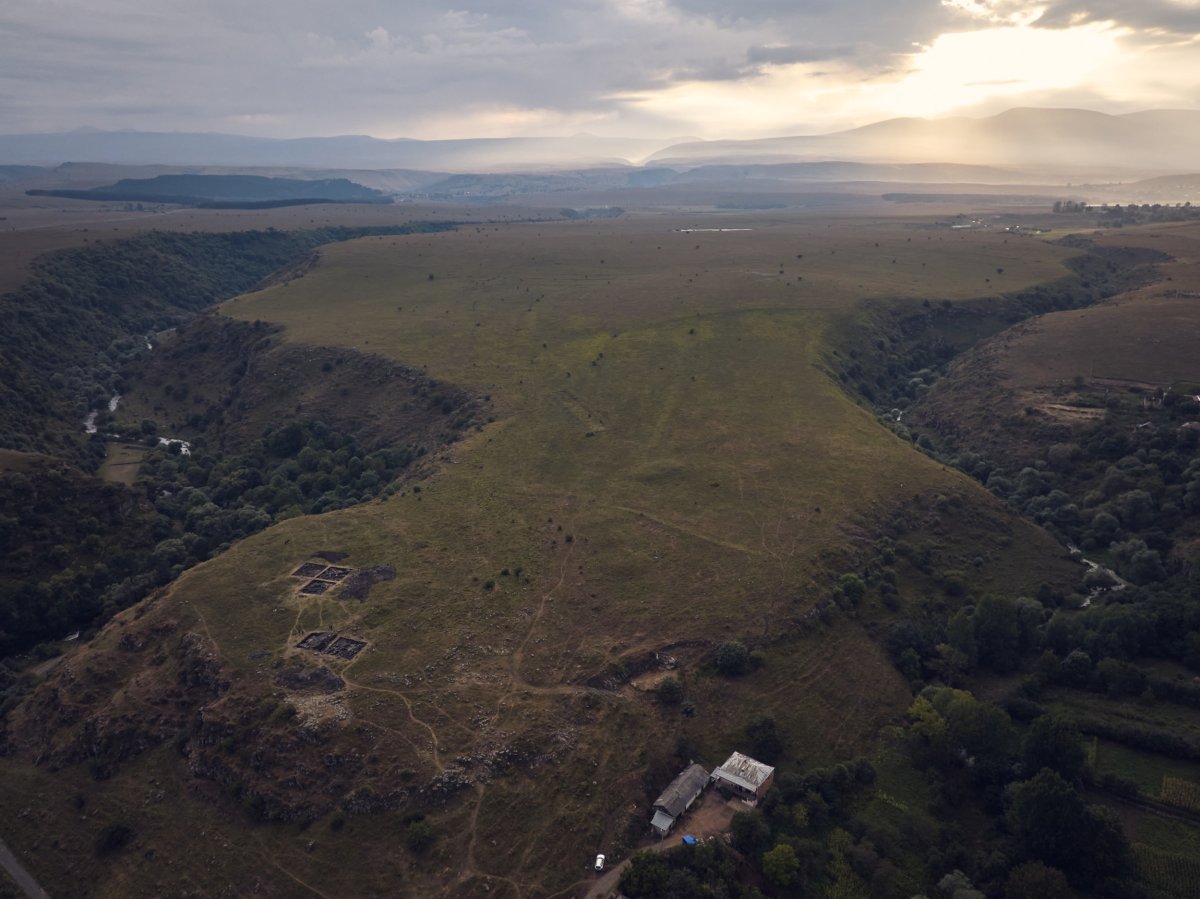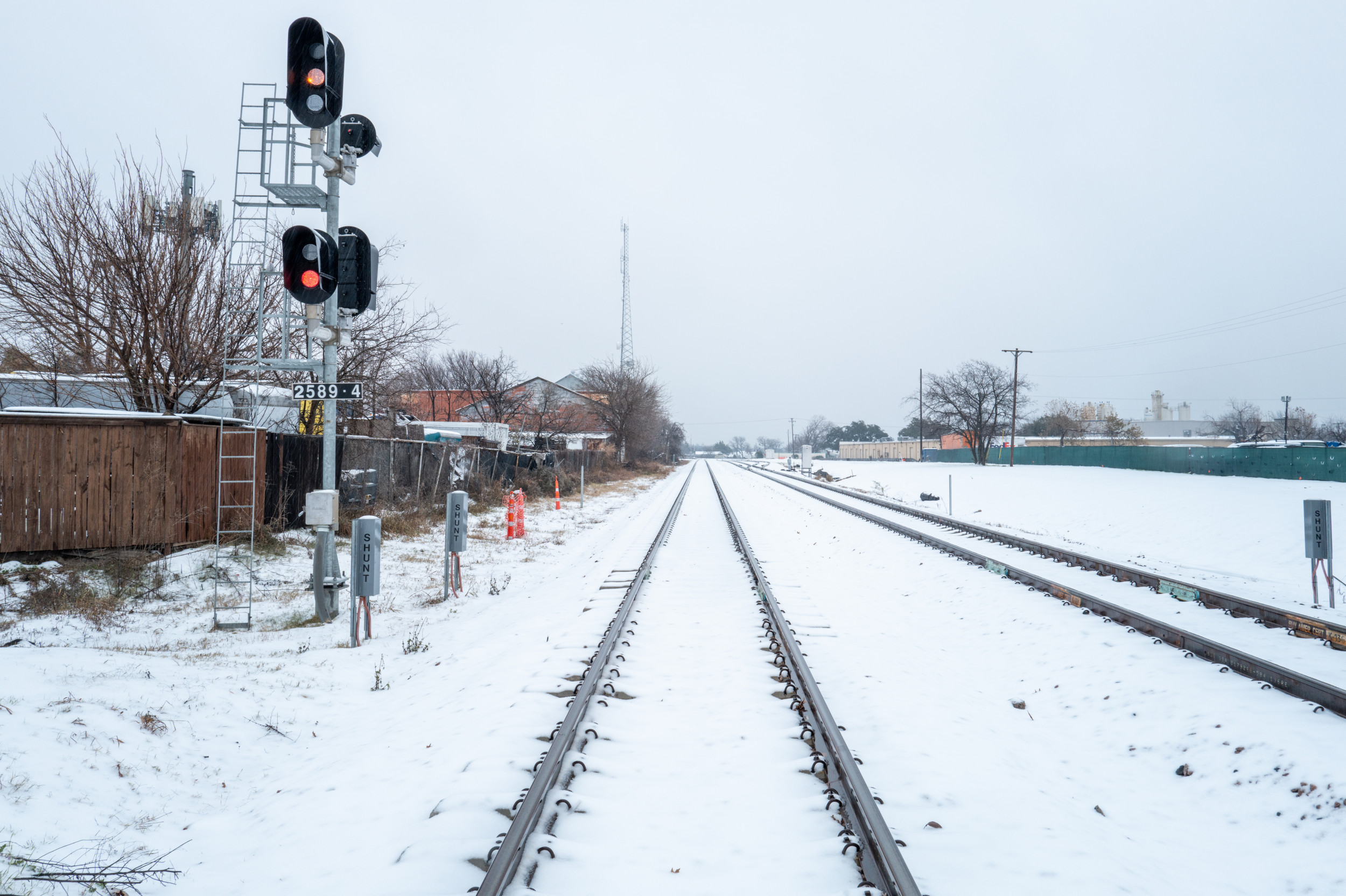Archaeologists have uncovered intriguing new insights into a Bronze Age "mega-fortress" that dates back to around 3,000 years ago.
Researchers conducted a systematic ground and aerial survey of the site, Dmanisis Gora, which is located in Georgia—a transcontinental country that straddles the boundary between Eastern Europe and West Asia in the South Caucasus region.
Analysis identified hundreds of man-made features across the site, many of which had not been mapped before, revealing that the fortress complex is significantly larger than previously thought.
The findings, published in the journal Antiquity, offer a glimpse into societies that existed around the time of the Late Bronze Age and Early Iron Age transition, while casting new light on the history of human urbanism.

Fortress settlements in the South Caucasus appeared in the period 1500–500 B.C. and represent an unprecedented historical development in the region. Despite this, some particularly extensive examples of these sites—which the researchers refer to as "mega-fortresses"—remain poorly understood as a settlement type.
Dmanisis Gora, considered to be of "exceptional" preservation and size, represents one of these mega-fortresses, according to the researchers.
"[Mega-fortress] is not a term that really been used in a Caucasus context before," study lead author Nathaniel Erb-Satullo, a senior lecturer in archaeological science at Cranfield University in the United Kingdom, told Newsweek.
"I wanted to use this term to describe a type of site that has been identified as archaeologists have increasingly investigated fortress landscapes in the South Caucasus."
"Hilltop fortresses of up to about 10 hectares have long been known as a defining feature of the Late Bronze and Early Iron Age in the South Caucasus, but recent work has identified enormous extended outer fortification systems around a couple of these sites covering more than 50 hectares," Erb-Satullo said.
Aside from these cases, there are perhaps one or two other possible examples, but they have not been investigated systematically using recent mapping technologies.
It is only in the past 15–20 years that researchers have conducted systematic surveys of the areas immediately around fortresses in the region—a trend partly enabled by developments in drone-based mapping technologies.
After working in Georgia for several years, Erb-Satullo and colleagues were taken on a visit to Dmanisis Gora. The researchers were impressed by the "massive" stone walls of the inner fortress.
"It was immediately [clear] that it was a very interesting site deserving of further investigation. It's important to note, however, that at the time we were not aware of how large it was—what we initially saw was what we are now calling the 'inner fortress,'" Erb-Satullo said.
Following their initial visit, the researchers conducted further investigations, including systematic drone mapping to get a clearer understanding of the site that would not have been possible from the ground.
"The drone took nearly 11,000 pictures which were knitted together using advanced software to produce high-resolution digital elevation models and orthophotos—composite pictures that show every point as if you were looking straight down," Erb-Satullo said in a press release.
"These datasets enabled us to identify subtle topographic features and create accurate maps of all the fortification walls, graves, field systems, and other stone structures within the outer settlement."
The investigations revealed that the site was more than 40 times larger than previously understood, including a large outer settlement defended by a 0.6-mile-long fortification wall.
"The key finding was the site was much larger than originally thought, and more specifically, that the outer enclosure was filled with many more structures over a larger area than was expected," Erb-Satullo told Newsweek.
The characteristics of the outer settlement have significance for understanding what kinds of sites these mega-fortresses were, according to the researcher.
Based on the available evidence, the authors propose that the large outer settlement may have been occupied regularly, but seasonally—meaning that the population living at the site may have expanded and contracted in different seasons. The inner fortress, meanwhile, appears to have been occupied year-round, as evidence by the larger accumulation of archaeological layers there.
"Dmanisis Gora sits at the boundary between present day agricultural and pastoral grazing lands. It is possible that it may have been an important stopping point for pastoralists moving animals between lowland winter and highland summer pasture zones," Erb-Satullo said.

The results suggest "a mechanism for settlement growth that was predicated on building relationships between mobile herders, rather than one based on gathering together groups of sedentary (non-mobile) farmers," he said.
The research feeds into broader debates about the history of human population aggregation and urbanism, according to the researcher.
"Recent archaeological discoveries of large settlements which deviate in one or more ways from traditional definition of cities have forced archaeologists to think carefully about what cities are—or perhaps more usefully, what cities do: what their function is in society," Erb-Satullo said.
"Even though the spatial extent of the site equals or exceeds other ancient cities, I probably wouldn't call Dmanisis Gora a city, but it does help reshape our understanding of urbanism as a broader phenomenon."
Do you have a tip on a science story that Newsweek should be covering? Do you have a question about archaeology? Let us know via science@newsweek.com.
Reference
Erb-Satullo, N. L., Jachvliani, D., Higham, R., Weber-Boer, K. O., Symons, A., & Portes, R. (2025). Mega-fortresses in the South Caucasus: new data from southern Georgia. Antiquity, 1–20. https://doi.org/10.15184/aqy.2024.197




















 English (US) ·
English (US) ·